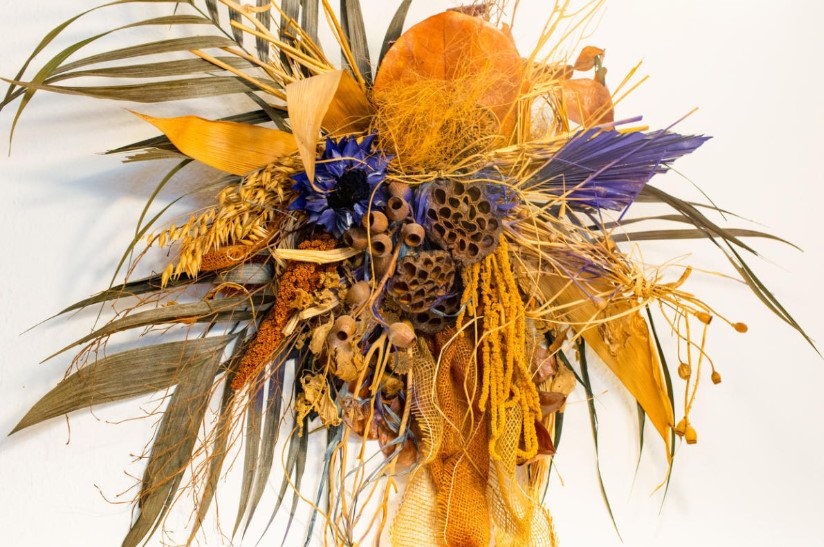
Is a bright colorful summer, many plants wither, gradually, the colours of autumn fill our gardens and parks. How do you want to save longer the beauty of flowers and smells of summer, to keep the memory of him for a long winter!
This will help us dried flowers-plants that retain their shape, color, and sometimes flavor for a long time. Bouquets or compositions of them will decorate the room and will remind you of the summer.
The range of plants-dried flowers is very large. Many of them you can see in nature and collect the necessary material in the forest, in the field, by the river. Others can be grown in your garden, and in the summer they will decorate your site, and in winter bouquets of them will refresh your home. Today we will talk about those plants-dried flowers that are grown in the garden.

Immortels
This is the name of the plant, the flowers of which have very hard petals. Drying, they retain their color and shape. This group includes a variety of plants, most of them belong to the Asteraceae family.
Helichrysum
Helichrysum native to Australia and Africa, mostly grown in annual crop species Нelichrysum bracteatum. Usually it is grown large-form, which is called N. monstrosum. It is a variety with baskets up to 6 cm in diameter and lots of wrapper leaves, making flowers especially Terry.
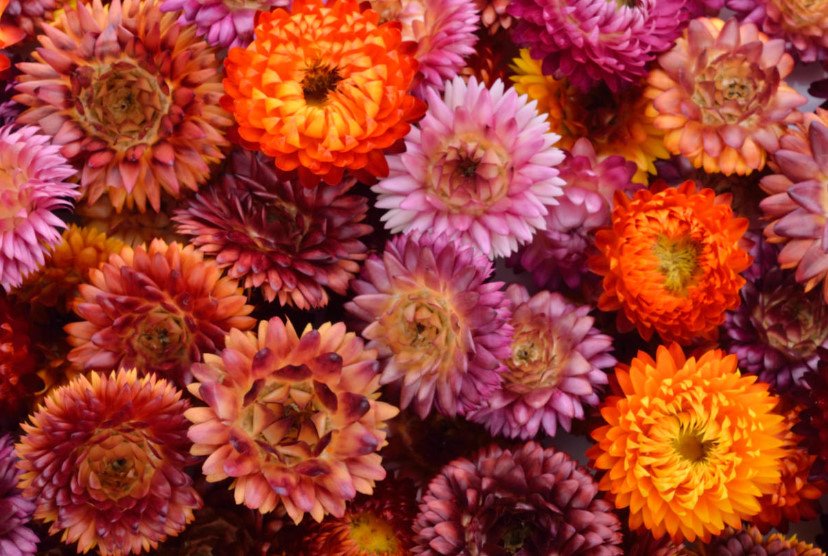
Plants from 40 to 100 cm tall with strong stems, forms inflorescences-baskets of various colors. There are the following varieties: ‘Fireball’, ‘White’, ‘Yellow’, ‘Scarlet’, ‘Lotos’, ‘Light’, one of the highest — ‘Royal size’, grows up to 1 m from stunted interesting ‘Leteum’, ‘Hot Bikini’, ‘Moreska’, ‘Chico Red’, ‘Pink porcelain’.
Helipterum (acroclinium)
Most popular Нelipterum or roseum Acroclinium roseum. An annual plant native to the southwestern parts of Australia reach up to 50 cm and Forms a rosette of leaves, from which depart the stems, occasionally branching.
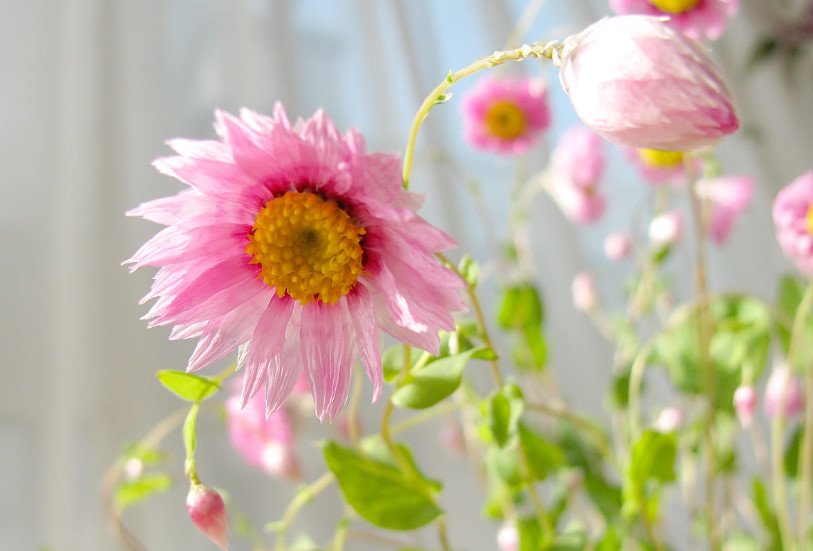
Inflorescences-baskets up to 4 cm in diameter are formed by yellow tubular flowers and a wrapper of hard white or pink scales-they give the flower a decorative effect. Flowering short, but abundant.
It has a large-flowered shape with pink-red inflorescences. Known varieties ‘Red Bonnie’, ‘Album’, ‘Roseum’, ‘Yellow stars’, ‘Bright suns’, and a mixture of colors, including a mixture of ‘Bonnie’.
Ammobium
Ammobium alatum is originally from Australia. In our climate, it is an annual plant up to 60 cm, highly branched. Small inflorescences-baskets up to 1.5 cm with a yellow middle and white dry petals (in fact, it is the leaves of the wrapper) are very decorative.

Flowering long (from June to frost) and abundant. Beautiful in the flower bed and in the winter bouquets.
Xeranthemum
Xeranthemum annuum grows in the Mediterranean. Strongly branched annuals up to 60 cm Baskets white-pink-purple shades 3.5-4 cm in diameter. Blooms from mid-summer to autumn. There are double and semi-double forms and varieties: ‘rose’, ‘Violetpurple’, ‘Carmine’, ‘Cossack’ (a mixture).

Anaphalis
Most common in the middle lane of Anaphalis margaritacea. This is a perennial plant, stems up to 45 cm tall and narrow leaves are covered with pubescence, making the whole plant seems silvery. Small baskets (up to 0.8 cm) of white-silver flowers are collected in inflorescences-shields. The plant is frost-resistant, able to spread very quickly.
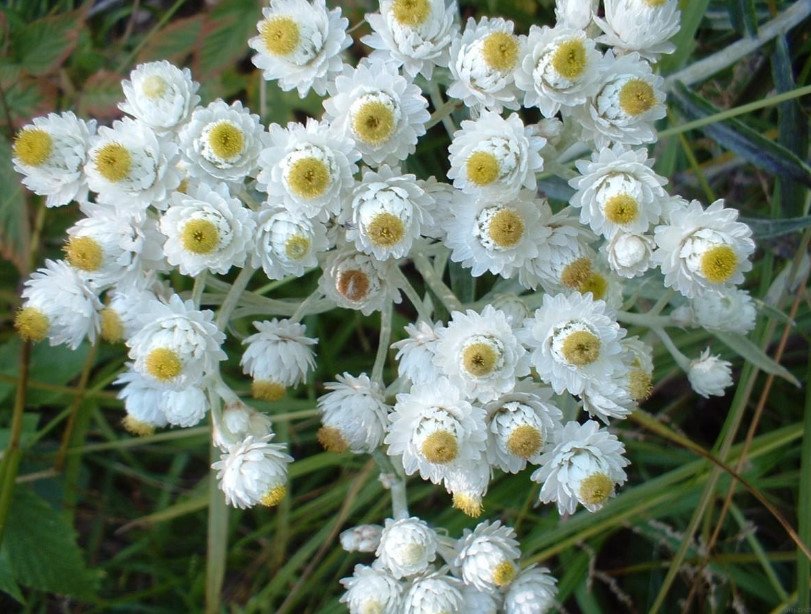
Gomphrena
The most commonly used in culture is Gomphrena globosa, a plant from the Amaranth family. It comes from the tropical regions of America, we have grown as an annual. The plant is formed by strongly branched shoots up to 35 cm tall. Small flowers, painted in white and pink-purple colors, collected in a rounded or oval inflorescence 3-4 cm in diameter.

There are a mixture of colors ‘High’, ‘strawberry’, ‘Pompon’, ‘Bright Border’, ‘Pixie Mix’, a series of Gnome, ‘Buddy White’, ‘Buddy Purple’.
Yarrows
For use in dry bouquets suitable two types of yarrow.
- Achillea filipendulina. Large perennial up to 1.2 m tall. Very elegant thanks to the dense and flat inflorescences-shields Golden color. Blooms in July-August.
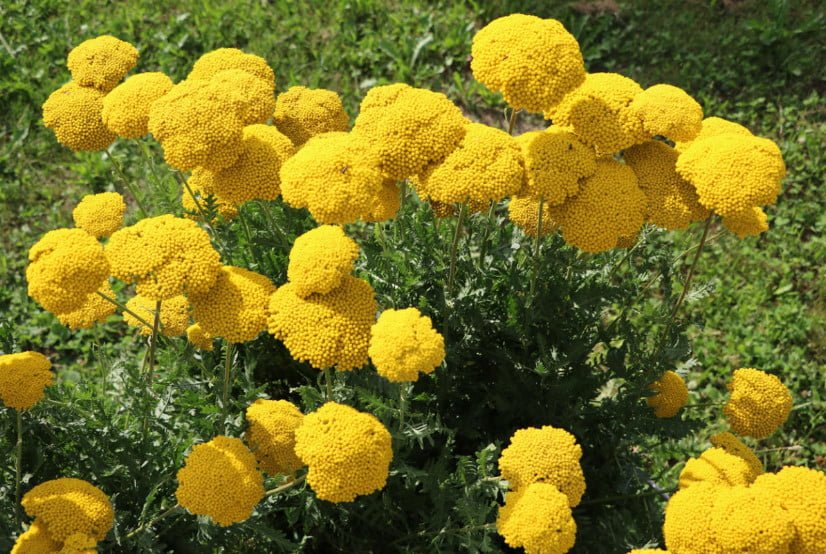
- Achillea ptarmica better known to gardeners under the name oyster. It is a perennial with creeping rhizome and shoots up to 80 cm tall. Snow-white baskets 1.5 cm in diameter are collected in loose flaps. Flowering begins in July and lasts 30-35 days.
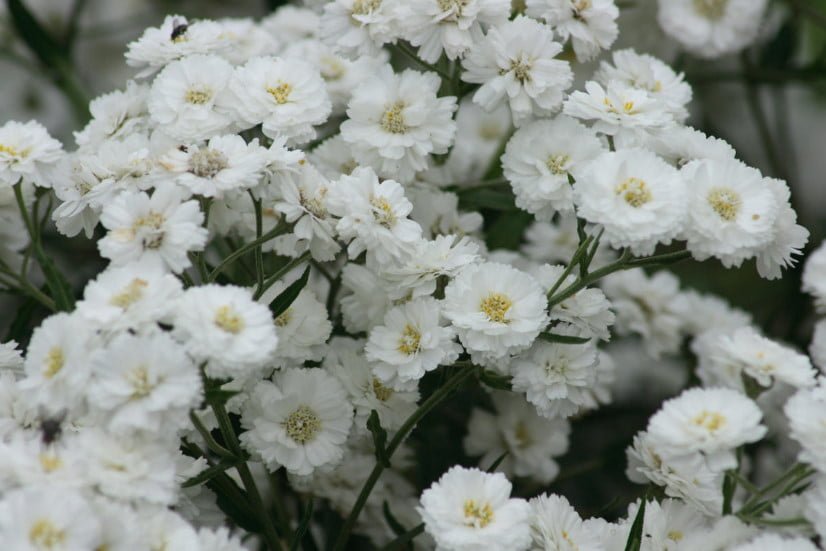
The mussels is added to dried bouquets to create openness and to set off its white flowers other flowers.
There are other dried flowers, which are also called lace, they give the compositions lightness and airiness. In the first place there is baby’s breath.
Gypsophila
In floristry, the most common Gypsophila paniculata. This is a perennial plant that forms lush openwork bushes in the form of a ball up to 100 cm in diameter. They consist of numerous thin branched shoots, ending with tiny white flowers that bloom in July and bloom up to 45 days. There are garden forms with Terry and pink flowers.
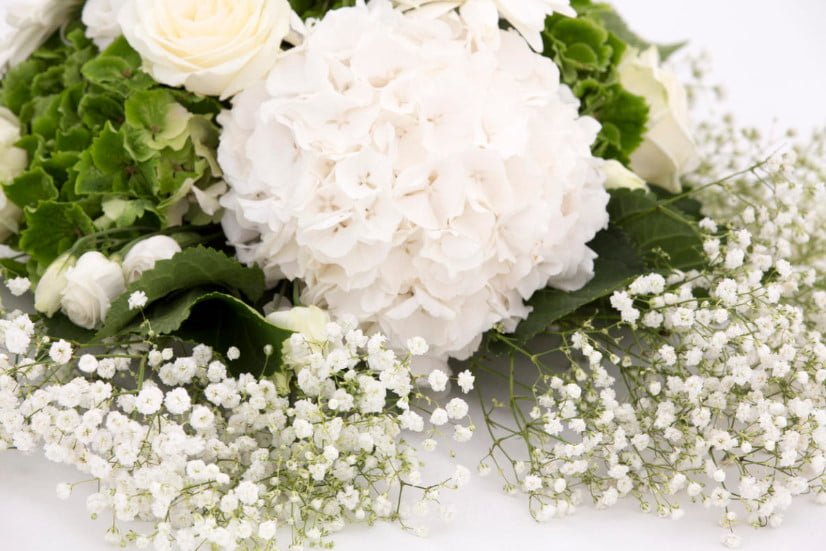
Bred a lot of varieties :’ white cloud’, ‘snow flakes’, ‘Carmine’, ‘Flamingo’, ‘Mirage’, ‘Akulina’, ‘Rosenschleier’, ‘Pink Star’, ‘Rosea’ and others.
Limonium
Limonium is a genus of 300 species widely distributed in both hemispheres. Annual and perennial herbs with small flowers, gathered in corymbs or panicles. Painted in a variety of colors – from white and pink to yellow, blue, lilac.
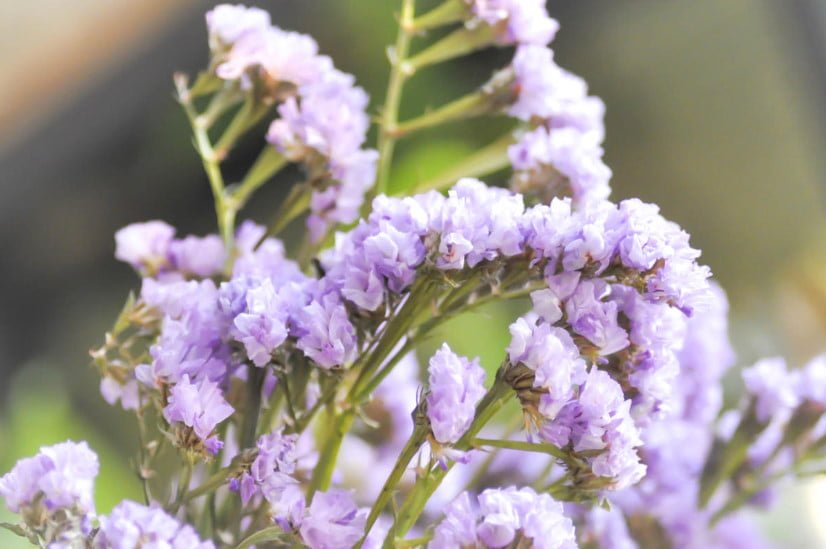
Some species are grown in gardens, he has varieties with large and bright flowers. For example, the following are interesting: ‘Twinkle’, ‘snow fringe’, ‘Heather garden’.
Amaranths
Genus Amaranthus has 90 species, of which four are used in the culture: paniculate, tailed, dark and tricolor. High colorful plants with inflorescences of various shapes and colors, mainly Burgundy, purple, yellow and green. They are well preserved in the dried form.

Celosia
Celosia is originally from India. In floriculture, two types are used:
- Celosia argentea var cristata, commonly known as scallops or roosters with inflorescences in the form of a cock crest, which are a variety of bright colors.
- Celosia argentea var plumosa. The brightly colored inflorescence, paniculate form.
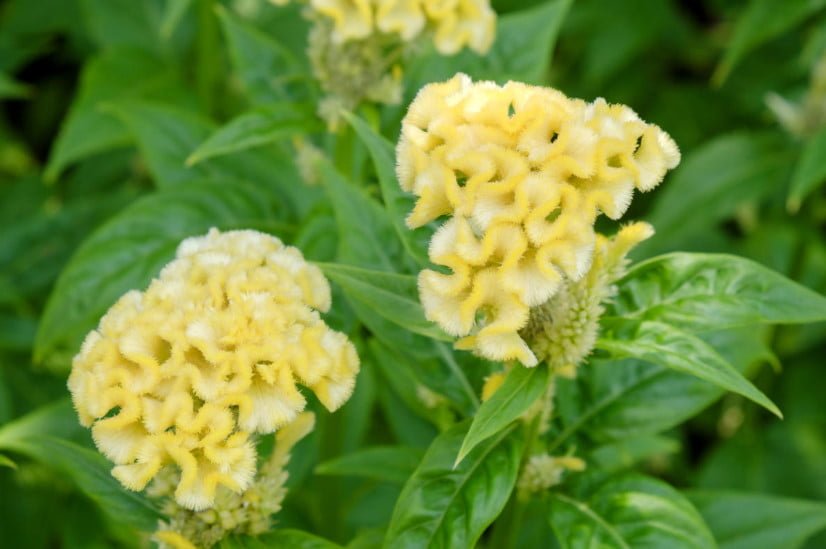
Craspedia
Growers cultivated only one of the 30 species-Craspedia globosa. This is a perennial plant native to Australia, we have grown as an annual. Straight stems 50-70 cm high in August are crowned with round yellow inflorescences 2.5-3 cm in diameter.
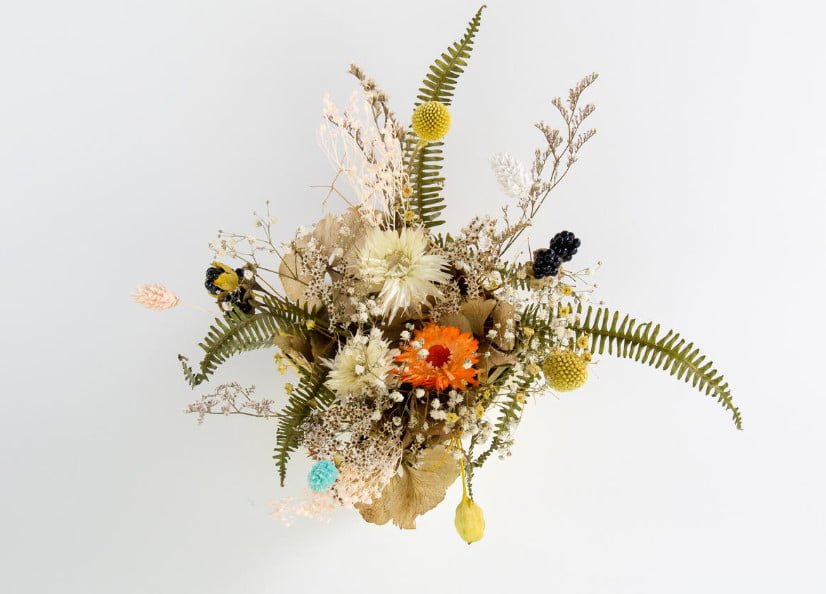
Varieties Craspedia: ‘Cold Ball, ‘Drumsticks’.
Echinops
The most popular among florists Echinops ritro is a perennial high (up to 1 m) plant with very strong stems and slightly prickly feathery leaves. Forms spherical inflorescences of blue color up to 5 cm in diameter. Flowering lasts more than a month in mid-summer.
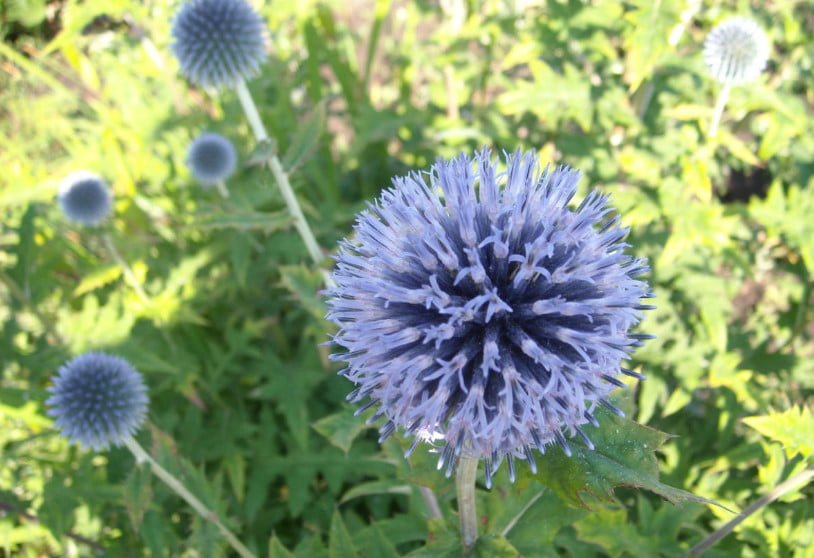
Varieties: ‘Blue Glow’, ‘Taplow Blue’, ‘Veitch’s Blue’.
Egudi
This tall showy plant with grey-blue carved blue leaves and capitate flowers surrounded by spiny “collar”. The most interesting for floriculture and used in winter bouquets Egudi planum and Egudi alpinum.
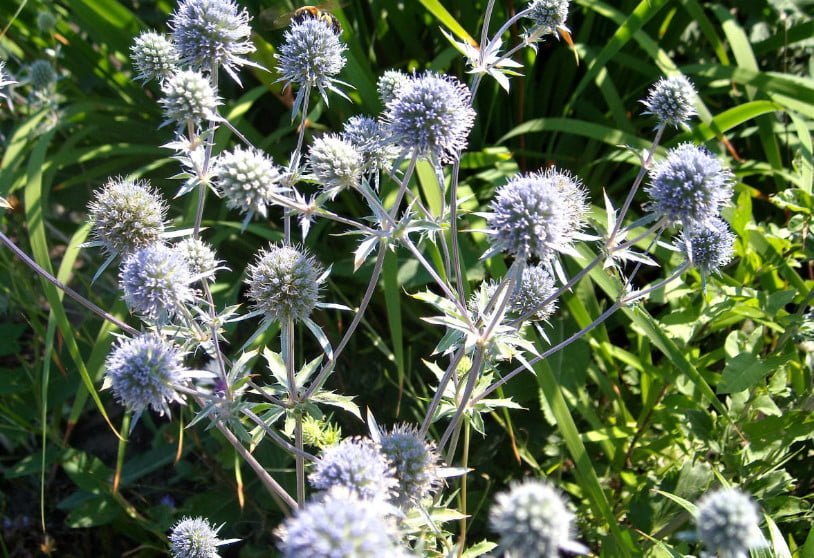
Grades: ‘Amethyst’,’ Blue Star’,’ Blue Jackpot’,’ Superbum’,’Sleeve Donard’.
Onions and cereals
A variety of decorative bows with inflorescences-balls of blue, lilac, purple and other colors are very effective and decorative. Inflorescences of many cereals can also become a decoration of the winter bouquet.

Plants with interesting fruits
Bright representative-Lunaria annua. Plant up to 60 cm tall, grown as a biennial. For florists interesting fruit-pods rounded shape up to 3 cm in diameter with a transparent partition. Ripen in early autumn of the second year.

Some plants form fruit-boxes, they are also interesting as dried flowers. For example, bright orange lanterns physalis, Nigella forms a rounded greenish with stripes boxes up to 3-4 cm in diameter.
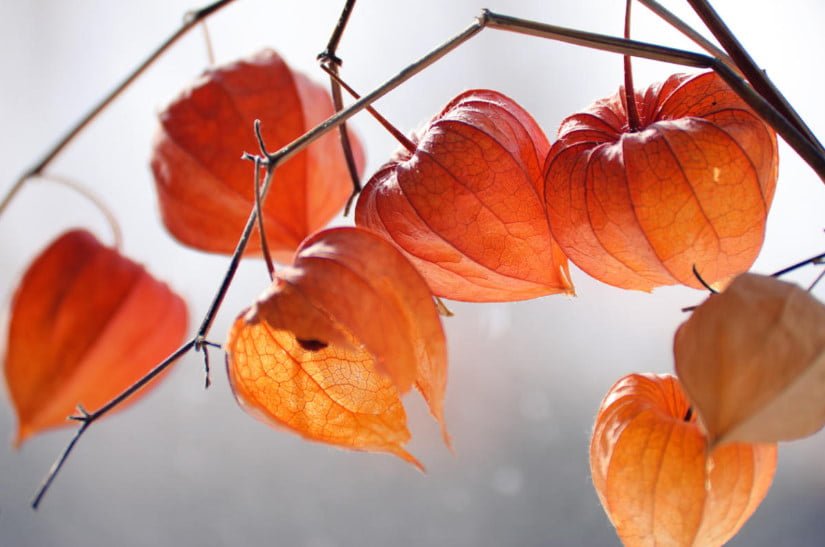
On Siberian irises after flowering are dry brown oblong boxes. Echinacea in place of baskets forms convex spiny balls consisting of seeds.
These plants can be grown in the garden and used to create winter bouquets. This is a very exciting creative activity.
What are the dried flowers are growing in your garden? Do you make floral arrangements of dried flowers? Share with us in the comments.
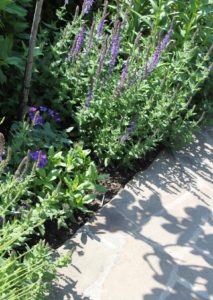
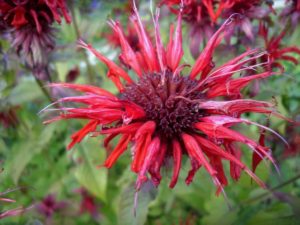
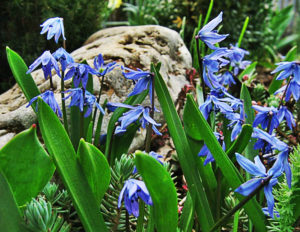

Leave a Reply